Mid-Atlantic Exploration: Napoléon on Saint Helena Island
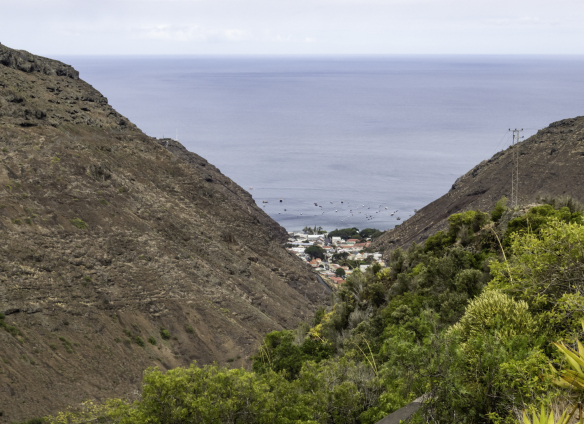 Jamestown, the capital of the British Overseas Territory of Saint Helena, Ascension, and Tristan da Cunha, is also the historic main settlement of Saint Helena Island in a V-shaped valley on its north-western coast; it is the island’s only port and the center of the island’s road and communications network
Jamestown, the capital of the British Overseas Territory of Saint Helena, Ascension, and Tristan da Cunha, is also the historic main settlement of Saint Helena Island in a V-shaped valley on its north-western coast; it is the island’s only port and the center of the island’s road and communications network
Imagine Napoléon’s dismay when he realized he was not being banished to America as he anticipated, but to the remote island of St Helena in the mid-Atlantic instead. Located 1,200 miles from the nearest landmass off the west coast of Africa, St Helena was the ideal choice for Napoléon’s exile… after all, the last thing the British wanted was a repeat of Elba!
Napoléon arrived in St Helena on 15th October 1815, after ten weeks at sea on board the HMS Northumberland. William Balcombe, an employee of the East India Company and one-time family friend of the French emperor, put Napoléon up at Briars Pavilion when he first arrived on the island. However a few months later in December 1815, the emperor was moved to nearby Longwood House, a property said to have been particularly cold, uninviting and infested with rats.
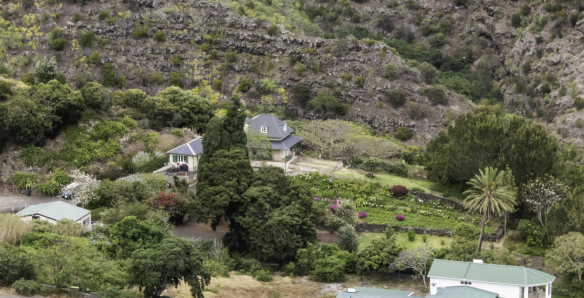 After spending one night in Jamestown in a building that no longer survives, Napoléon visited his future home in exile, The Longwood House, which was ordered to be remodeled to make it suitable for the ex-Emperor – during the interim two months, he lived in the green valley of the Briars at the “Briars Pavilion” (pictured above)
After spending one night in Jamestown in a building that no longer survives, Napoléon visited his future home in exile, The Longwood House, which was ordered to be remodeled to make it suitable for the ex-Emperor – during the interim two months, he lived in the green valley of the Briars at the “Briars Pavilion” (pictured above)
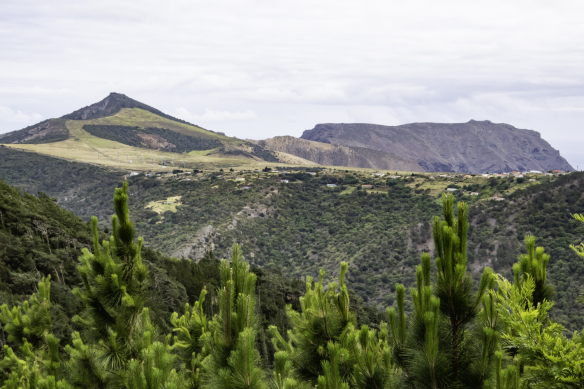 A view of the interior island terrain of Saint Helena Island as we drove up from the Briars valley to the Longwood district where Napoleon lived out the rest of his life in exile at the Longwood House
A view of the interior island terrain of Saint Helena Island as we drove up from the Briars valley to the Longwood district where Napoleon lived out the rest of his life in exile at the Longwood House
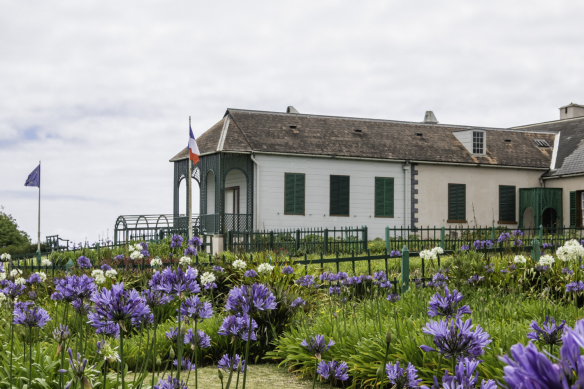 Now a museum owned by the French government, Longwood House was the final residence of Napoléon, who lived there during his exile from December 1815 until his death in May 1821
Now a museum owned by the French government, Longwood House was the final residence of Napoléon, who lived there during his exile from December 1815 until his death in May 1821
Today Longwood House is considered to be the most poignant and atmospheric of all the Napoléonic Museums, as it is preserved with its original furniture from 1821, complemented by over 900 artifacts. Thanks to the island’s Honorary French Consul, Michel Dancoisne-Martineau, with the support of the Foundation Napoléon and over 2000 donators, visitors to Longwood House can now also view an exact replica of the room where Napoléon died on 5th May 1821.
Napoléon died on 5 May 1821, and was buried according to his last wishes on 9 May near a source in the Geranium Valley, called the Valley of the Tomb ever since. A winding footpath leads the visitor to Napoléon ‘s tomb that is surrounded by railings topped by spear-heads. The tombstone is large and white and bears no inscription. It is surrounded by several trees, among which are 12 cypress trees planted in 1840 in memory of Napoléon ‘s twelve great victories.
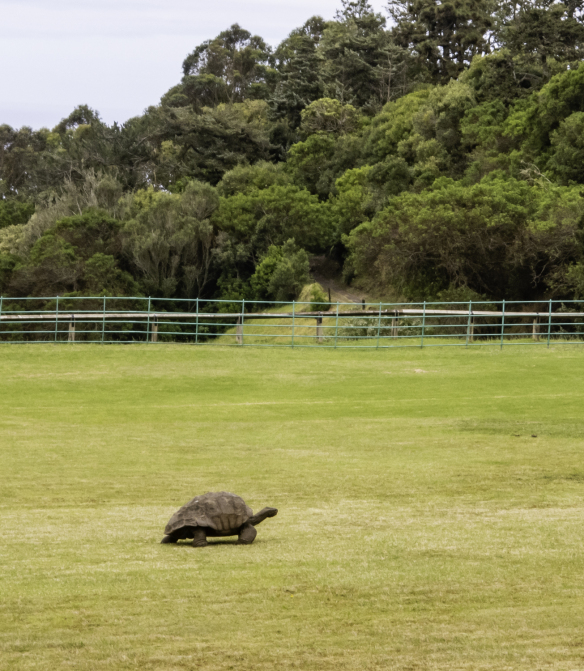 Several giant tortoises roam the grounds of the Plantation House, including the oldest living inhabitant on Saint Helena Island, Jonathan (age estimated to be around 185 years old!), a Seychelles Giant Tortoise (Aldabrachelys gigantean hololissa) – making him the oldest known land vertebrate in the world
Several giant tortoises roam the grounds of the Plantation House, including the oldest living inhabitant on Saint Helena Island, Jonathan (age estimated to be around 185 years old!), a Seychelles Giant Tortoise (Aldabrachelys gigantean hololissa) – making him the oldest known land vertebrate in the world
 To celebrate our last night at Saint Helena Island, our expedition team organized a sunset Zodiac cruise and the Beverage Team visited each group on a Zodiac with glasses of Champagne to celebrate the end of a wonderful journey exploring the mid-Atlantic islands
To celebrate our last night at Saint Helena Island, our expedition team organized a sunset Zodiac cruise and the Beverage Team visited each group on a Zodiac with glasses of Champagne to celebrate the end of a wonderful journey exploring the mid-Atlantic islands
Ready to learn more?
Determine whether life aboard The World is the right fit for you. Talk to one of our Residential Advisors today to learn more about this unique lifestyle, details of upcoming Journeys and Expeditions, and ownership opportunities.



